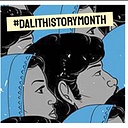The Revolutionary Journalism of Mooknayak
By Lydia Jayakumar
First published on 31st January 1920, over 101 years ago, Mooknayak was a newspaper founded by Dr. B.R. Ambedkar. Mooknayak, which literally translates to ‘leader of the voiceless’ was written in Marathi and published fortnightly from a working class neighbourhood called Parel in Bombay.
Chhatrapati Shahuji, the Maharaja of the erstwhile princely state of Kolhapur, financially assisted in the setting up of the newspaper, with an initial funding of Rs 2,500.
In many ways, Mooknayak was the direct opposition to the Brahmanical caste ideology prevalent in the press of the time. The 1920s were a transformative time for anti-caste movements which were gaining a mass base in the country. Dalit liberation movements were penetrating different parts of the country. Notable among these were the Ad-Dharm movement in the Punjab, the uprising among the Mahars in Maharashtra, the Namshudra movement in Bengal, the Adi-Dravida movement in Tamil Nadu among many more. These movements were often met violently retaliation in incidences which put ‘upper’-caste violence against Dalits on full display.
Despite this, the press from this time, refused to speak about caste or untouchability. There was no space for Dalit voices in the media. Dr. Ambedkar too saw clearly the prevalence of caste-based prejudice in journalism of the time. He often referred to it as the ‘age-old bias of newspaper’2. In the editorial section of the first issue of Mooknayak, he wrote
“If we throw even a cursory glance over the newspapers that are published in the Bombay Presidency, we will find that many among these papers are only concerned about protecting the interest of some (‘upper’) castes. And these can’t care less for the interest of other castes. This is not all. Sometimes, they go against the interest of other castes.” (Mooknayak, p 34).
At the same time, Dr. Ambedkar knew the importance of the press in educating and organising the masses to achieve real social transformation. This environment of mainstream exclusion resulted in the founding of Mooknayak. With Mooknayak, he envisioned and created an alternative model of media which was written by and catered to the oppressed classes of the time.
The mainstream press of the time weren’t welcoming of Mooknayak. In fact, Bal Gangadhar Tilak’s newspaper ‘Kesari’ even outright refused to publish an advertisement about Mooknayak’s first issue. Instead, the focus of the so-called mainstream press was squarely on the anti-British colonial and nationalist movements. Protests by Dalits and other oppressed classes were constructed as an attempt to divide and attack the social fabric of the country.
However, Mooknayak did flourish among its readership. Issues of Mooknayak are important documents for our understanding of the early 1900s from the perspective of oppressed communities. Mooknayak reported on issues specific to western India but also looked at pan-Indian agitations against the caste system. It documented the two conferences of the Depressed Classes that took place in Margaon and Nagpur in 1920. It often took bold and radical stances on several contentious issues relating to women’s rights, religion and the nationalist politics. For instance, Gandhi’s idea of ‘swaraj’ was critiqued by Dr. Ambedkar in the newspaper.
If swaraj meant self-rule or freedom from British rule, he questioned what it meant for people who want to be emancipated from Brahmanical rule. Mooknayak helped create an idea of freedom that was deeper than the freedom struggle of the nationalists, with the issue of caste being placed front and center.
Though not the official editor, Dr. Ambedkar is believed to have edited 12 issues of Mooknayak before leaving to get his doctoral degree at the London School of Economics. Mooknayak didn’t have a long life, due to financial issues and persistent systemic pushback due to it being a newspaper run by members of oppressed caste communities. It was shut down in 1922. Dr. Ambedkar’s career in journalism, however, did not end here. He went on to create three more newspapers, Bahishkrut Bharat (1927–29), Janata (1930–56) and Prabuddha Bharat (1956). Despite its short life, Mooknayak signaled an era of Dalit assertion and laid the foundation for anti-caste writing and politics in the future.
Lydia Jayakumar is a writer interested in working on caste and development studies. She is a recent graduate of St. Stephen’s College, Delhi, India.
References:
- Bharat Patankar, and Gail Omvedt. “The Dalit Liberation Movement in Colonial Period.”Economic and Political Weekly, vol. 14, no. 7/8, 1979, pp. 409–424. www.jstor.org/stable/4367359
- Ambedkar used the phrase ‘age-old bias of the newspaper’ in a statement he issued outside the Parliament explaining his decision to resign from the Union Cabinet. Retrieved from: http://www.mea.gov.in/Images/attach/amb/Volume_14_02.pdf
- https://thewire.in/media/mooknayak-ambedkar-news
- https://www.forwardpress.in/2020/01/100-years-of-the-launch-of-mooknayak/ 4. B.R Ambedkar. “Mooknayak”, Trans. Vinay Kumar Vasnik, Samyak Prakashan, 2019
